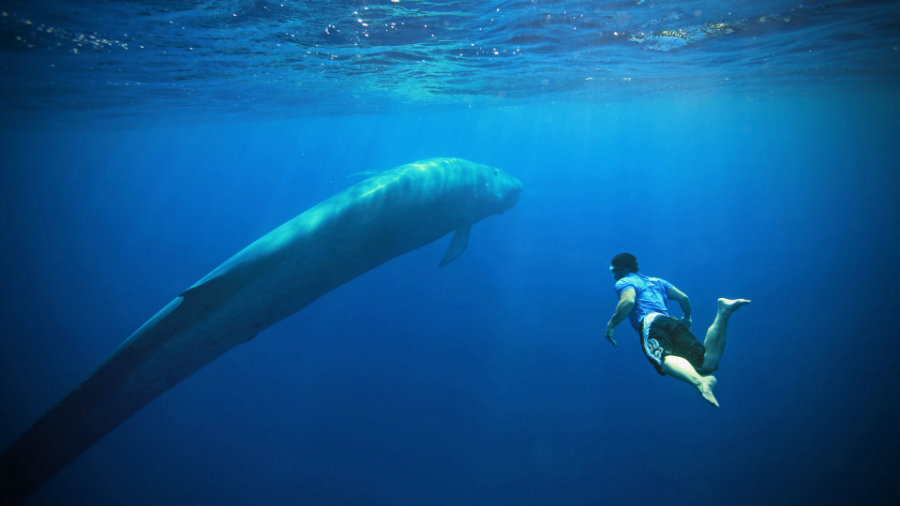Blue whales are the largest species to live in modern times, but new research shows that the earliest specimens were not nearly as big as they are today.
Millions of years ago, the largest of blue whales were only 15-feet long. At some point, whales began to grow and became the biggest animals on Earth.


What shocks scientists is that the evolutionary leap appeared to occur in a very short period from an evolutionary perspective.
How blue whales became so insanely big
Apparently, one of the reasons why whales became so big is that their food, consisting of krill and fish, started to pack up in small areas. This allowed larger whales to thrive on as they could feed more efficiently. This process is possible thanks to baleen, the bristles in the mouth of whales that allow them to filter out their food. The whale takes a gulp of water, then closes its mouth and proceeds to spit it, using its baleen as a net.
The curious part is that, according to researchers, baleen appeared in whales 20 million years ago, while oversized whales started appearing just 3 to 5 million years ago. Even so, those whales measured only about 30 feet, a third of a modern blue whale.
Researchers saw that 3 million years ago, polar ice sheets expanded and more nutrients were carried down to the sea. Furthermore, water from the depths started to come to the surface, which promoted the development of plankton for whales to feed on. In essence, massive blue whales could evolve thanks to climate change, as increased amounts of food were readily available.


Bigger whales were protected from predators due to their size, and their fat reserves allowed them to travel to farther locations where there are copious amounts of plankton. Smaller whales would remain in their local areas with a limited amount of food available.
Apparently, this is also the reason why there isn’t a wide variety of small baleen whales, as they couldn’t compete with larger specimens.
“We have a unique opportunity to study how the largest animals of all time function in these different ecosystems, and that’s a lot of fun. Are whales still getting bigger? If we fast-forward a few million years into the future if food is not limiting, can they evolve even greater body sizes?” stated lead researcher Jeremy Goldbogen.
As whales became larger, they could ingest food more efficiently, obtaining enormous amounts of potential energy as they eat large groups of plankton and small fish. Making the best out of the food that was available, whales were able to increase their body mass from 10 tons up to 100 tons in millions of years.
Goldbogen assures that there are plenty of cases where food availability hinders or promotes how animal species grow or become smaller in short time scales. Regarding blue whales, these animals could benefit from eating massive amounts of food in a very efficient manner, allowing them to achieve astounding body sizes.
Source: The Royal Society Publishing B
